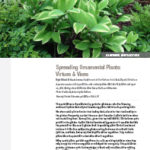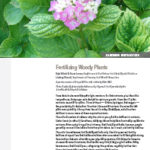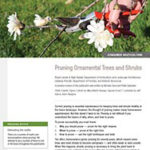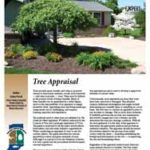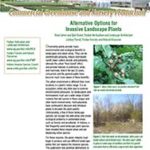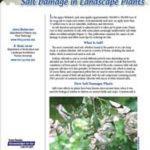Landscape Management
Spreading Ornamental Plants: Virtues and Vices (HO-295-W)
Purdue Extension Publication
This publication is meant to serve as a precautionary guide for the gardener when choosing ornamental plants that may be overly aggressive and difficult to manage in a garden or landscape. The publication discusses plants commonly used as ground cover and traditional perennials.
Fertilizing Woody Plants (HO-140-W)
Purdue Extension Publication
This publication discusses the importance of fertilizing with organic and inorganic fertilizers, uses of inorganic fertilizers, rates and methods of application, and special cases in fertilizing. Tables are included listing the spring and fall soil temperatures at a four-inch depth in Tippecanoe County, Indiana, averaged over an eighteen-year period, and rates for applying common fertilizer materials needed at different hole dimensions.
Pruning Ornamental Trees and Shrubs (HO-4-W)
Purdue Extension Publication
Correct pruning is essential maintenance for keeping trees and shrubs healthy in the home landscape. However, the thought of pruning makes many homeowners apprehensive. But this doesn’t have to be. This publication reviews the basics of pruning ornamental trees and shrubs in the home landscape.
Tree Appraisal (FNR-473-W)
Purdue Extension Publication
This publication provides an explanation of the tree appraisal process, and the methods and considerations appraisers use when they assign a value to trees. Species, location and condition rating tables are included to assist in the valuation process for landscape trees. This publication replaces Landscape Tree Appraisal (HO-201-W).
Urban Forestry, Department of Forestry & Natural Resources
Alternative Options for Invasive Landscape Plants (ID-464-W)
Purdue Extension Publication
This publication lists potential alternatives to some of the most notorious and damaging invasive plants commonly used in Indiana landscapes. Unlike other resources, this list includes both native and non-native species.
Salt Damage in Landscape Plants (ID-412-W)
Purdue Extension Publication
Salts used to de-ice roads and sidewalks can injure and even kill many different landscape plants. This publication examines the causes of salt damage in plants and offers some tips for reducing its risks. This replaces Purdue Extension publication HO-142-W, Roadside De-Icing Salts and Ornamental Plants.
Landscape Plants for Wet Areas (In Revision) (HO-227-W)
Purdue Extension Publication
This publication lists and briefly describes landscape plants that are suitable for the specific site conditions of wet soil. These lists can serve as a guide, but are not intended to be exhaustive. Many other plants may grow well in wet soil conditions besides the ones on the list.
Landscape Plants for Moist to Slightly Moist Areas (In Revision) (HO-226-W)
Purdue Extension Publication
This publication lists and briefly describes landscape plants that are suitable for the specific site conditions of moist to slightly moist soil. These lists can serve as a guide, but are not intended to be exhaustive. Many other plants may grow well in moist to slightly moist soil conditions besides the ones on the list.
Landscape Plants for Sandy Soils (In Revision) (HO-225-W)
Purdue Extension Publication
This publication lists and briefly describes landscape plants that are suitable for the specific site conditions of sandy areas. These lists can serve as a guide, but are not intended to be exhaustive. Many other plants may grow well in sandy conditions besides the ones on the list.
